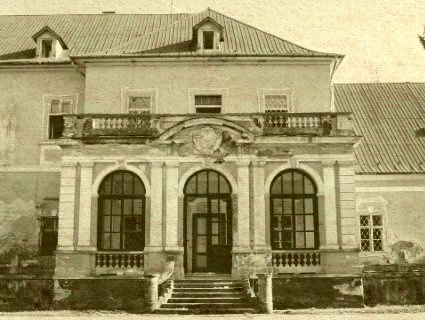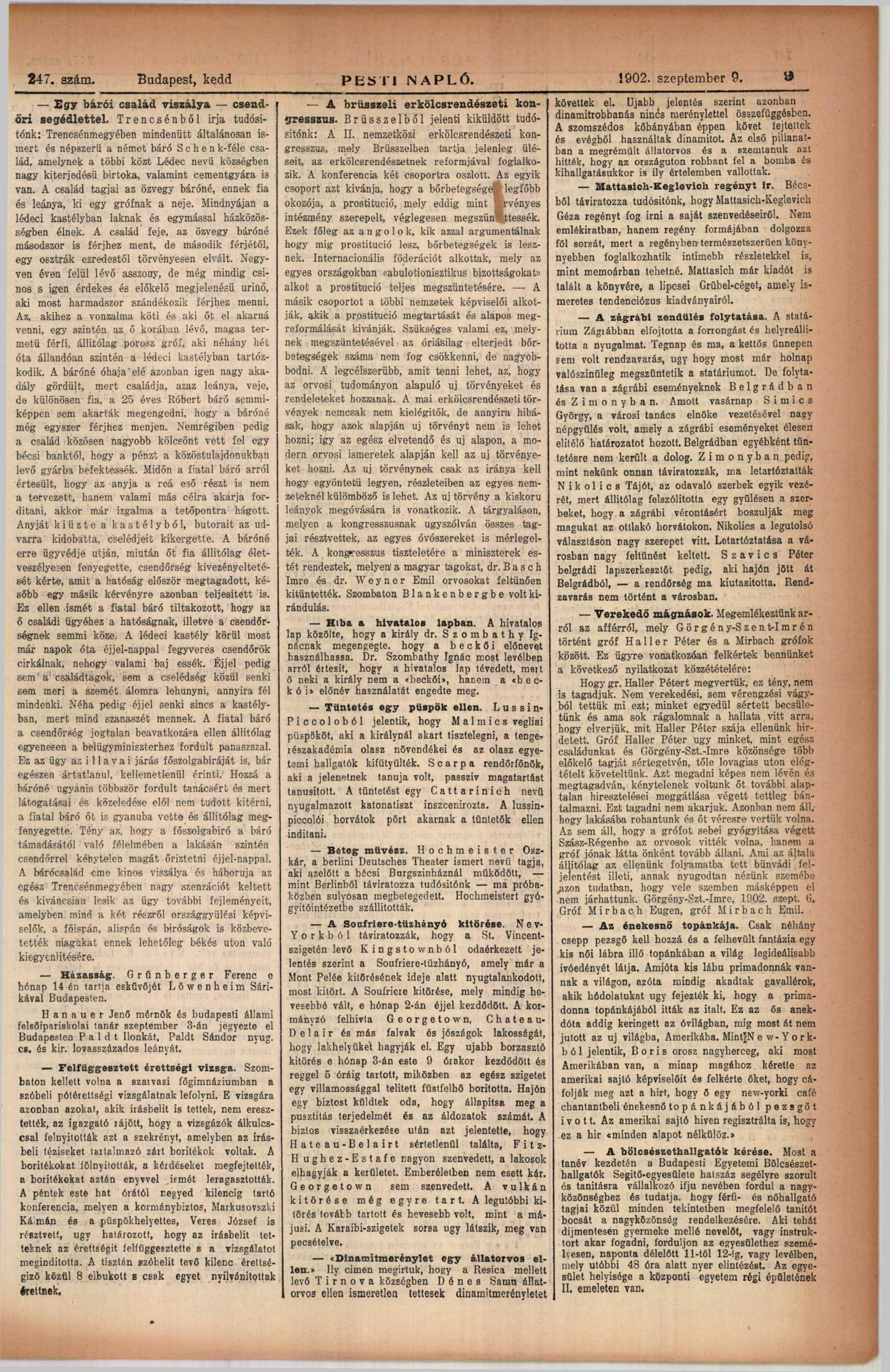According to the current state of research, the Ladce castle was built in the 1840s, probably on older foundations. The castle was built by Imrich Motešický, a member of an important family who held several important positions in the administration of the county of Trenčín. It is with the Motešický family, who have owned the manor house for almost 150 years, that the traditional name of the castle is also connected to the Motešický castle.
At the end of the 19th century, the castle belonged to Adolf Schenk, a Viennese banker and businessman, founder of the Ladce cement plant (1838 - 1895), who married him. His wife was Jeannette (1850 - 1917), daughter of Baron Leopold Popper (1821 - 1886), one of the richest citizens (not only) of Trenčín County, who bought the manor from the descendants of Karol Motešický for 500,000 gold coins and gave it to his daughter as a dowry. For his financial services, but also for the possession of large properties, Schenk received the baronial title "da Ladiec (von Lédecz)" from Emperor Franz Joseph I.
In the period between the two wars the castle became the property of the Congregation of the Sisters of Mercy of San Vincenzo (today: Daughters of Christian love of St. Vincent de Paul, abbreviated: Vincentians). Ordinary sisters used it until the early 50s of the twentieth century. The Vincentians used the manor house as a "central house", then partially rebuilt and modified it for their own needs. Part of the manor served as a nursing home for the sick, a resting place for the older nuns and for the purpose of raising newcomers - "teenagers for their future activities as nurses and social workers". Thanks to the layout scheme of 1946, we are aware not only of the use of the individual rooms of the existing manor house, but also of the functions of today's buildings that no longer exist, especially the south wing.
In 1951 the castle was nationalized. Later, despite its monuments, it was used as a boarding school for apprentices of the Voroshilov plant (later heavy engineering plant) in Dubnice nad Váhom, then (until 1963) as a barracks for a military unit guarding the armory in Dubnice nad Váhom. The castle came from the army in 1966, when it came under the administration of the Banská Bystrica Regional National Committee, which established a special school here - Special Apprenticeship College. The manor house was used for school purposes, with an intensity gradually weakened until 2007, when it returned to the property of the Order of the Merciful Sisters of St. Vincent. Recently the manor house is privately owned, the current owner is the company Silvia Da Col Heisar s.r.o.
The oldest part of the castle is the north wing, which was originally on the ground floor. The east wing and the western extension of the north wing were later added to the manor house. Probably in the same period, around 1760, a chapel was built. The third construction phase is connected to the activities of Adolf Schenk da Ladiec (von Ledécz), who at the end of the nineteenth century presented a main portico with a north-facing terrace. The corner towers of the western part of the manor, which was enlarged to the south, also date back to this period. The fourth phase is represented by building modifications of the Vincentian order, in which not only the baroque part (1925) and the floor wing (1928) were added, but also the ground floor buildings on the south side of the courtyard. The last, fifth construction phase involved the adaptation of the manor for the pupils of the local special school in the second half of the twentieth century, inserting the inhabited attic of the manor.
 |
 |
Thanks to the support of the Ministry of Culture of the Slovak Republic (www.culture.gov.sk), a historical-architectural research of the castle was carried out in 2017-2018, of which Eng. Arch. Alexander Németh, holder of the certificate of the Ministry of Culture of the Slovak Republic for carrying out research on monuments in the fields of historical-architectural research and historical-urban research. The text is based in part on the results of the research, elaborated in the aforementioned research documentation, with the consent of the author.
Pesti napló - 9. september 1902






